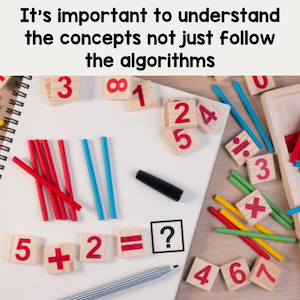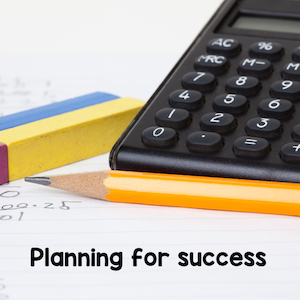|
Do your students struggle with math? Are you searching for ways to help them understand? Do you sometimes think you are talking in a foreign language? Here are some ideas to consider that may help you to navigate through the confusion and frustration. Seeing and touching things helps with understanding and making sense of ideas. I love to use hands on resources when teaching math skills. It's exciting to see the light bulb moments when kids get it. Blocks, dice, sticks, links, counters, lego, string, apples, cookies, and a good imagination can serve as effective tools for learning when they are used in your lessons. They help kids learn with concrete examples. Here are some more ideas and tips to help with teaching kids math concepts and skills. Availability Of MaterialsIt's important to make sure you have a selection of materials available and enough so that they can be used with small groups, or even full class activities. You may need to collect items if you don't have access to them. Many schools are well equipped with manipulatives that can work for math. However this isn't always the case. Sometimes you may need to source out items for yourself. There are lots of different things you can use that are free or inexpensive to obtain. Dollar stores are a great source for small items such as erasers, beads, popsicle sticks, paper clips, small blocks, dice, playing cards and many other little items that can work for many math activities. Garage sales also can be a good source. Measuring tools such as rulers, measuring tapes, scales, and containers should be available for doing standard measurement activities. Play money, base ten blocks, ten frames cards, snap cubes, links, pattern blocks and geometric solids are also useful for teaching math concepts. Organization Is KeyOnce you have collected or located the necessary materials you will need to find a way to organize them. Tubs and buckets work well. For small items, you can use recycled containers with lids as well. If you have a cart to hold the containers, that is bonus. Otherwise, you will need to find shelf space or some other spot where you can store them. I had two carts of tubs for math manipulatives that were available for my kids. They were a popular choice for free time activities as well. Understanding Concepts, Not Just AlgorithmsNowadays, kids are taught a variety of ways to apply their thinking to different mathematical concepts. That wasn't always the case. If you ask older adults about math, many will say they don't understand the "new math". They were taught formulas, but not really shown how they work. There are many adults who will say they are terrible at math or they didn't like math as a kid. This might be the reason why. It goes without saying that you need to understand the concepts to make sense of abstract concepts.. If you have only worked with algorithms and haven't really looked at how they work there might be some gaps in understanding. In order to teach kids how concepts work, it may require revisiting these concepts and making sure you understand them and can explain them using concrete examples. In order to teach a concept using concrete materials and examples, it is necessary to break it down and analyze what is going on. Because kids learn in different ways, it is important to make sure that you can address as many of those ways as possible when teaching a concept. This may include visual examples, anecdotal examples, and kinesthetic examples. Since we all make connections in different ways, approaching concepts from different angles will help more connections and understanding to happen. Planning For SuccessPlanning is important if you want kids to understand the concrete ideas and apply them to abstract situations. This means having an idea of the different materials and approaches needed before you actually teach the lesson. Once you have the materials you need and they are organized for easy access, you can start to figure out the different kinds of activities to use for each of the math concepts you wish to work on. This is where your imagination and creativity come into play. Each of us has a different way of approaching learning and a teaching style that works for us. Use these skills to help direct your students as they are introduced to new concepts and as they practice concepts they have already learned. You may need to teach the same concept a few times in a variety of different ways before kids can actually process it and understand it enough to be able to apply it to abstract situations later on. Next time, I will talk more about some of the concepts and tools that can be used to teach them. Related PostsComments are closed.
|
About Me Charlene Sequeira
I am a wife, mother of 4, grandmother of 9, and a retired primary and music teacher. I love working with kids and continue to volunteer at school and teach ukulele. Categories
All
|















 RSS Feed
RSS Feed